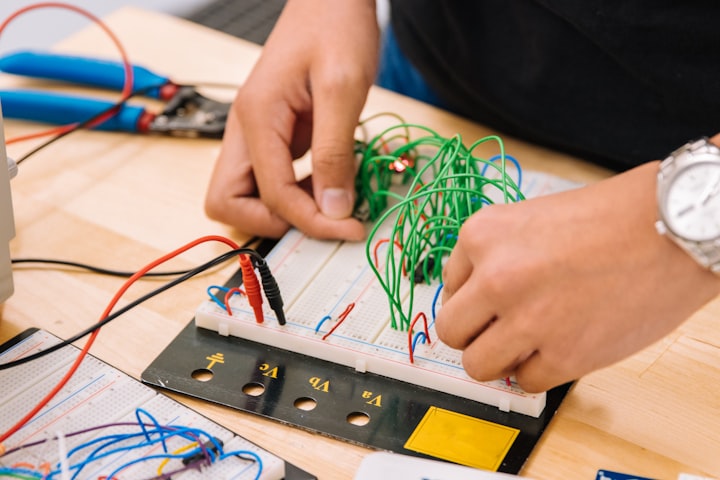Artificial Intelligence
Machine Learning

Machine literacy is a fleeting evolving field of computers that involves the use of statistical algorithms and ine models to enable computer systems to learn from data and make prognostications or opinions without being explicitly programmed to do so. It's a subset of artificial intelligence( AI) and has been increasingly popular in recent times due to its quality robotization, effectiveness, and delicacy in a wide range of operations.

Machine literacy algorithms can be divided into three orders supervised literacy, unsupervised literacy, and underpinning literacy Supervised literacy involve singing a model using labelled data, where each data point is accompanied by a corresponding marker indicating the correct affair. The thing of supervised literacy is to prognosticate the correct marker for new, unseen data.
Common operations of supervised literacy include image recognition, speech recognition, and natural language processing. Unsupervised literacy, on the other hand, involves training a model on unlabeled data, where there are no destined markers or orders. The thing of unsupervised literacy is to identify patterns and structures in the data, and the model must learn to group analogous data points without any previous knowledge of what those groups should be. Common operation operations supervised literacy includes clustering, including machine literacy where an agent learns to interact with rain by performing conduct and entering prices or penalties.
The thing of underpinning literacy is to find an optimal policy that maximizes the accretive rice over time. This type of illiteracy has been fully applied to meds similar to game playing, robotics, and tone driving. The most important aspects of machine literacy are the process of model selection and evaluation. There are numerous different algorithms and models to choose from, and opting for the right bone for a given problem can be a gruelling task gruelling, indeed the stylish model can produce inaccurate or unreliable prognostications if it isn't fully estimated and validated on new data.

To estimate a machine literacy model, it's common to solve the available data into two sets: a training set and a testing set. The model is trained on the training set, and its performance is estimated on the testing set. This process helps to enensureat the model can generalize to new, unseen data and isn't simply studying the tethering. An important consideration in machine literacy is the quality and volume of the data used to train the model.
The performance of a model is largely the diversity of the data used to train it. Likewise, machine literacy algorithms generally claim large quantities of oachiachieve handling; tagging this data can be a time-consuming process. One of the main benefits of machine literacy is its capability to automate complex and time-consuming tasks that would also cause significant oral trouble. For illustration, machine literacy algorithms can be used to automate image and speech recognition, natural language processing, and indeed medical opinion.
In addition to robotization, machine literacy can also give new receptivity and discoveries in fields similar to astronomy, biology, and social lores. By constructing large datasets and linking patterns and correlations, machine illiteracy helps scientists else, machine literacy isn't without its challenges and limitations. One of the main challenges is the eventual office and demarcation of the models and data utilized to condition them. Machine literacy algorithms can only learn from the data they're given, and if that data is prejudiced or deficient, the operating model will also be poisoned and unreliable. Another challenge is the interpretability and translucency of machine literacy models. numerous models, similar to deep neural networks, are largely complex and delicate to understand, making it challenging to clarify how they landed at a particular decision or articulation.
In conclusion, machine literacy is an important tool with the eventuality to alchemize numerous diligence and fields. Its capability to automate complex tasks and produce





Comments
There are no comments for this story
Be the first to respond and start the conversation.